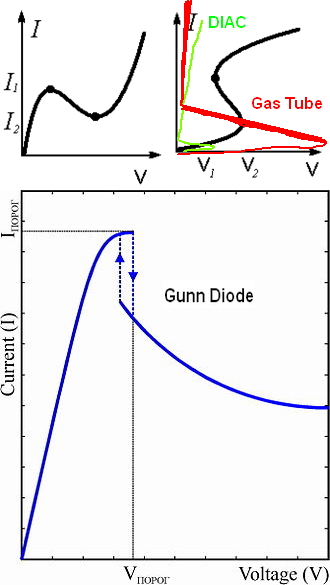Let's discuss two types of negative differential resistance ( out of 4)
A) a forward voltage causes current to rise quickly like a hot resistor but due to special Fermi Levels in a semi-conductor, a threshold is reached resulting in current to drop abruptly which follows the same path back with some hysteresis.
- example is the Gunn Diode for extreme high microwave resonators
B) A forward voltage occurs with little or no current until a threshold is reached and then the voltage collapses to a low voltage and then rises like a resistor with more voltage and current.
example is a DIAC which is used to trigger SCR's , ( similar to a 3 leaded Unijunction and SCR characteristics except with 2 leads.)
example gas tube ( neon, transient suppressor, fluorescent , air arc (ESD) corona, etc) these have much high trigger levels which is sensitive to gas pressure and vacuum. In air BreakDown Voltage (BDV) that is 1kV/mm to 3kV/mm
- Here a dielectric gas, which is an insulator, excites electrons under an electric field until the the electrons escape the outer orbit, and depending on the gas and current may emit X-Rays like FL tubes which hit the phospors inside glass and secondary electron emission results in a lower visible wavelength and conducting lots of ions which drops the voltage as current rises with a -ve R.
p.s. I have no idea where Wiki got these hypothetical curves, but I added the coloured ones (not to voltage scale)

